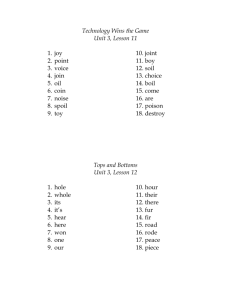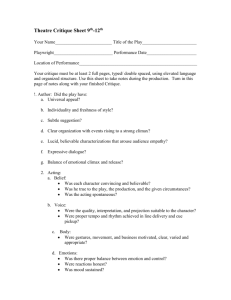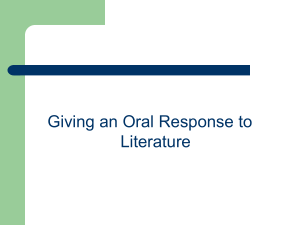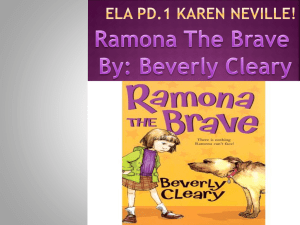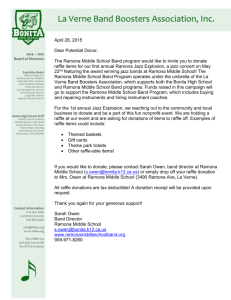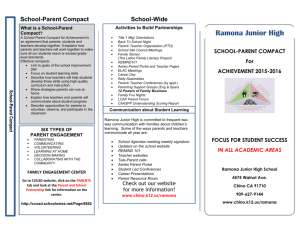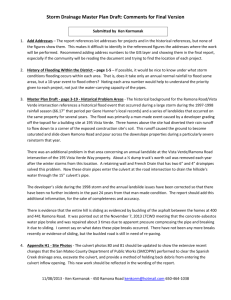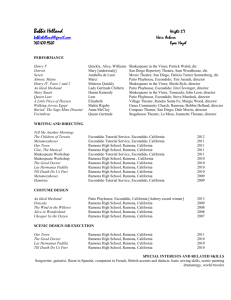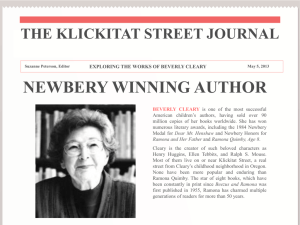Book critic assessment – NEW
advertisement
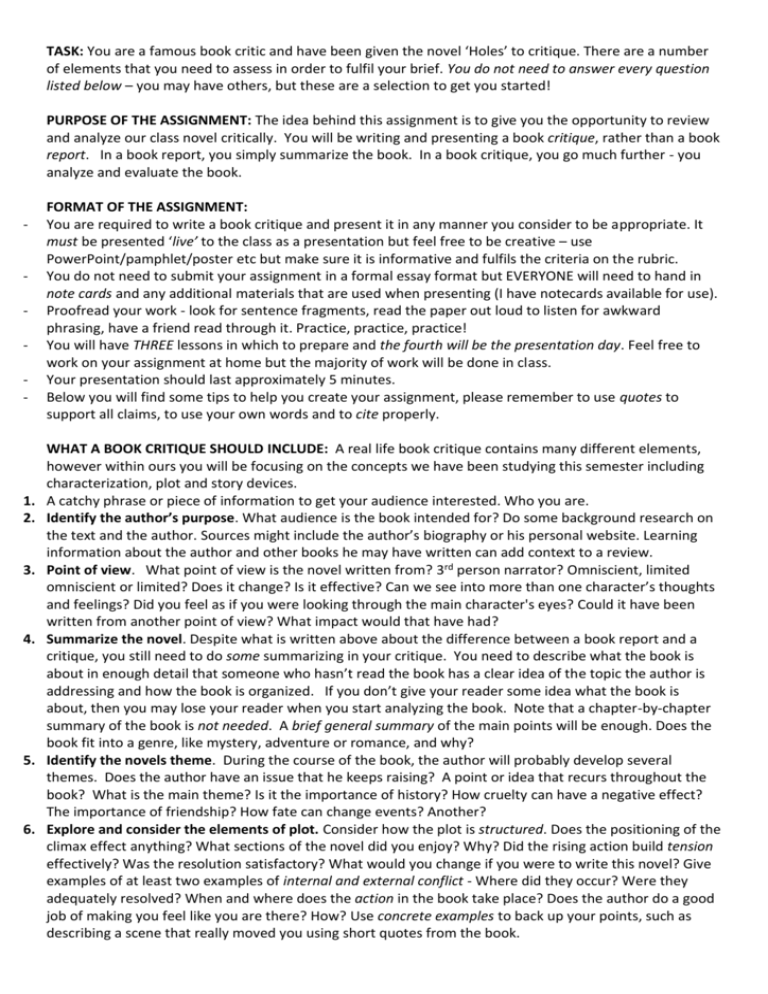
TASK: You are a famous book critic and have been given the novel ‘Holes’ to critique. There are a number of elements that you need to assess in order to fulfil your brief. You do not need to answer every question listed below – you may have others, but these are a selection to get you started! PURPOSE OF THE ASSIGNMENT: The idea behind this assignment is to give you the opportunity to review and analyze our class novel critically. You will be writing and presenting a book critique, rather than a book report. In a book report, you simply summarize the book. In a book critique, you go much further - you analyze and evaluate the book. - - 1. 2. 3. 4. 5. 6. FORMAT OF THE ASSIGNMENT: You are required to write a book critique and present it in any manner you consider to be appropriate. It must be presented ‘live’ to the class as a presentation but feel free to be creative – use PowerPoint/pamphlet/poster etc but make sure it is informative and fulfils the criteria on the rubric. You do not need to submit your assignment in a formal essay format but EVERYONE will need to hand in note cards and any additional materials that are used when presenting (I have notecards available for use). Proofread your work - look for sentence fragments, read the paper out loud to listen for awkward phrasing, have a friend read through it. Practice, practice, practice! You will have THREE lessons in which to prepare and the fourth will be the presentation day. Feel free to work on your assignment at home but the majority of work will be done in class. Your presentation should last approximately 5 minutes. Below you will find some tips to help you create your assignment, please remember to use quotes to support all claims, to use your own words and to cite properly. WHAT A BOOK CRITIQUE SHOULD INCLUDE: A real life book critique contains many different elements, however within ours you will be focusing on the concepts we have been studying this semester including characterization, plot and story devices. A catchy phrase or piece of information to get your audience interested. Who you are. Identify the author’s purpose. What audience is the book intended for? Do some background research on the text and the author. Sources might include the author’s biography or his personal website. Learning information about the author and other books he may have written can add context to a review. Point of view. What point of view is the novel written from? 3rd person narrator? Omniscient, limited omniscient or limited? Does it change? Is it effective? Can we see into more than one character’s thoughts and feelings? Did you feel as if you were looking through the main character's eyes? Could it have been written from another point of view? What impact would that have had? Summarize the novel. Despite what is written above about the difference between a book report and a critique, you still need to do some summarizing in your critique. You need to describe what the book is about in enough detail that someone who hasn’t read the book has a clear idea of the topic the author is addressing and how the book is organized. If you don’t give your reader some idea what the book is about, then you may lose your reader when you start analyzing the book. Note that a chapter-by-chapter summary of the book is not needed. A brief general summary of the main points will be enough. Does the book fit into a genre, like mystery, adventure or romance, and why? Identify the novels theme. During the course of the book, the author will probably develop several themes. Does the author have an issue that he keeps raising? A point or idea that recurs throughout the book? What is the main theme? Is it the importance of history? How cruelty can have a negative effect? The importance of friendship? How fate can change events? Another? Explore and consider the elements of plot. Consider how the plot is structured. Does the positioning of the climax effect anything? What sections of the novel did you enjoy? Why? Did the rising action build tension effectively? Was the resolution satisfactory? What would you change if you were to write this novel? Give examples of at least two examples of internal and external conflict - Where did they occur? Were they adequately resolved? When and where does the action in the book take place? Does the author do a good job of making you feel like you are there? How? Use concrete examples to back up your points, such as describing a scene that really moved you using short quotes from the book. 7. Consider characterization and character development. Were the characters fully developed and believable? Do you know anyone like them? Was there a character that you felt a particular connection to? What techniques did the author use to draw you into the story? Were they effective? 8. The use of story devices. Consider the use of story devices (cliff hanger, flashback, suspense, foreshadowing) and discuss how the author developed it/them in the novel. Were they effective? Where did they occur? What impact did they have? 9. Address any other issues that affect the book’s quality. There are lots of other things that you may want to discuss. How is the book organized? Did any parts make you laugh? Which ones? What do you think of the author’s writing style? That is, do you like the way the author uses words? Does the author include any historical information? 10. Give it a rating (1-10 stars) and pass judgment. Don’t forget to include your opinion of the book, whether you liked or disliked it. Comment on the book’s strengths and weaknesses - make your judgment persuasive by giving specific examples. In most book reviews, reviewers will come right out and say whether they think the books is good or not, or what parts were better than others! What do you think it deserves? Provide information on what the author could have included to increase your rating. 11. Check your aim. You've written your review. Now's the time to step back and apply this sort of reasoning to your own review. Read your book review aloud to yourself and check for spelling and punctuation. Ask someone else to read your review and get their opinion of it. Make any changes you think you need. Did you explain every major aspect of the book? What was your target audience? Did you write this for your class or for a group of hole digging enthusiasts whose audience already knows this type of book well? If so, you might have to edit your review to add or remove details. If you don't...you're done! HOW TO PREPARE: Look for examples of book reviews. Your favorite magazine or newspaper may be a good place to start. You can also find book reviews online at the Books section of USA Today or The New York Times, the Barnes & Noble Review, or Kirkus Reviews. STANDARDS MET THROUGH CCSS.ELA-LITERACY: RL.6.1 - Cite textual evidence to support analysis of what the text says explicitly as well as inferences drawn from the text. RL.6.3 - Describe how a particular story's or drama's plot unfolds in a series of episodes as well as how the characters respond or change as the plot moves toward a resolution. RL.6.5 - Analyze how a particular sentence, chapter, scene, or stanza fits into the overall structure of a text and contributes to the development of the theme, setting, or plot. RI.6.7 - Integrate information presented in different media or formats (e.g., visually, quantitatively) as well as in words to develop a coherent understanding of a topic or issue. W.6.1 - Write arguments to support claims with clear reasons and relevant evidence. W.6.1.B - Support claim(s) with clear reasons and relevant evidence, using credible sources and demonstrating an understanding of the topic or text. W.6.1.D - Establish and maintain a formal style. W.6.1.E - Provide a concluding statement or section that follows from the argument presented. W.6.4 - Produce clear and coherent writing in which the development, organization, and style are appropriate to task, purpose, and audience. W.6.5 - With some guidance and support from peers and adults, develop and strengthen writing as needed by planning, revising, editing, rewriting, or trying a new approach. SL.6.4 - Present claims and findings, sequencing ideas logically and using pertinent descriptions, facts, and details to accentuate main ideas or themes; use appropriate eye contact, adequate volume, and clear pronunciation. L.6.3 - Use knowledge of language and its conventions when writing, speaking, reading, or listening. L.6.3.A - Vary sentence patterns for meaning, reader/listener interest, and style.* L.6.3.B - Maintain consistency in style and tone.* AN EXAMPLE BOOK CRITIQUE: Below is a book review from a 3rd grade writer of ‘’Ramona Quimby, Age 8’’ by Beverly Cleary Touch of the flu? Egg in her hair? Poor Ramona! “Ramona Quimby, Age 8” is a nine chapter, one hundred and ninety page book about an eight year old girl in third grade. She started school with a surprise gift from her dad, only to have it stolen by a boy she called “Yard Ape.” One day at lunch she tried to be cool and show off for her friends by cracking an egg on her head and found herself in a big mess. When flu season hit she learned how awful it felt to throw up in class. She and her sister learn about using good manners at the dinner table. As time goes on, Ramona and her family solve their problems, and learn to be more caring for each other. They also learn to be more considerate for each other when time alone is needed. My favorite part was during a scene where Ramona’s class is at lunch: “She took a firm hold on her egg, waited until everyone at her table was watching, and whack—she found herself with a hand full of crumbled shell and something cool and slimy running down her face.” (“Ramona Quimby, Age 8”, Beverly Cleary, p. 60) I thought that was funny because she wanted to be cool like the rest of her class, by breaking a hard boiled egg on her head. But guess what, her mother was in such a hurry she gave Ramona a raw egg! Whoops! I think the one thing the author wants me to know is that when my family may be having problems I can be of help by obeying them and not fussing, disturbing, and/or annoying them. “Ramona Quimby, Age 8” is one of the best Beverly Cleary books I’ve ever read because it pulled me in better than any other book in her series. (I have read 6 of her books.) It made pictures in my mind (Word Choice) and sounded like a real person wrote it (Voice). It also sounded good as I read it, flowed easily from sentence to sentence (Sentence Fluency), and sounded like a real 8 year old girl’s life. These traits made me want to keep on reading until the end of the book. I recommend this book to good readers who enjoy good long lasting chapters.
